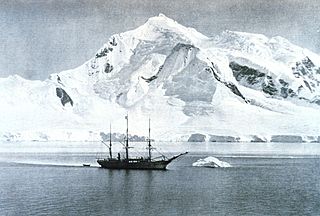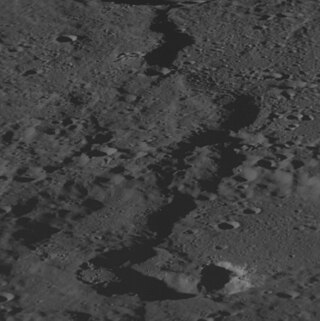
Gallia Belgica was a province of the Roman Empire located in the north-eastern part of Roman Gaul, in what is today primarily northern France, Belgium, and Luxembourg, along with parts of the Netherlands and Germany.
The Silos is an American rock band formed by Walter Salas-Humara and Bob Rupe in New York City, United States in 1985.

The Belgian Antarctic Expedition of 1897–1899 was the first expedition to winter in the Antarctic region. Led by Adrien de Gerlache de Gomery aboard the RV Belgica, it was the first Belgian Antarctic expedition and is considered the first expedition of the Heroic Age of Antarctic Exploration. Among its members were Frederick Cook and Roald Amundsen, explorers who would later attempt the respective conquests of the North and South Poles.

Gerlache Strait or de Gerlache Strait or Détroit de la Belgica is a channel/strait separating the Palmer Archipelago from the Antarctic Peninsula. The Belgian Antarctic Expedition, under Lt. Adrien de Gerlache, explored the strait in January and February 1898, naming it for the expedition ship Belgica. The name was later changed to honor the commander himself.
Arthur Newton Rupe was an American music executive and record producer. He founded Specialty Records, known for its rhythm and blues, blues, gospel and early rock and roll music recordings, in Los Angeles in 1946.

Discovery Rupes is an escarpment on Mercury approximately 650 kilometers (400 mi) long and 2 kilometres (6,562 ft) high, located at latitude 56.3 S and longitude 38.3 W. It was formed by a thrust fault, thought to have occurred due to the shrinkage of the planet's core as it cooled over time. The scarp cuts through Rameau crater. It was discovered by Mariner 10.
Rupes is the Latin word for 'cliff'. It is used in planetary geology to refer to escarpments on other worlds. As of January 2013, the IAU has named 62 such features in the Solar System, on Mercury (17), Venus (7), the Moon (8), Mars (23), the asteroids Vesta (2) and Lutetia (2), and Uranus's satellites Miranda (2) and Titania (1).

Antoniadi Dorsum is a ridge on Mercury at 25.1°N 30.5°W, and it is approximately 359 km in length. In 1976, it was named by the International Astronomical Union after Eugène Michel Antoniadi.

Rameau is a crater on Mercury. It was named by the IAU in 1976, after French composer Jean Philippe Rameau.

Victoria Rupes is an escarpment in the Victoria quadrangle of Mercury. The quadrangle was named after this escarpment, and the escarpment itself was named after the Victoria, a ship used on the famous expedition of Ferdinand Magellan. Its name was adopted by the International Astronomical Union (IAU) in 1976.

Claritas Rupes is a scarp in the Phoenicis Lacus quadrangle of Mars, located at 26° South and 105.4° West. It is 924 km long and was named after an albedo feature at 25S, 110W. The term "Rupes" is used in planetary geology to refer to an escarpments or cliff on Mars and other planets. It is the Latin word for cliff.

Adventure Rupes is an escarpment on Mercury approximately 270 kilometres long located in the southern hemisphere of Mercury. Discovered by the Mariner 10 spacecraft in 1974, it was formed by a thrust fault, thought to have occurred due to the shrinkage of the planet's core as it cooled over time.

Resolution Rupes is an escarpment on Mercury approximately 190 kilometers long located in the southern hemisphere of Mercury. Discovered by the Mariner 10 spacecraft in 1974, it was formed by a thrust fault, thought to have occurred due to the shrinkage of the planet's core as it cooled over time.

Belgica was a barque-rigged steamship that was built in 1884 by Christian Brinch Jørgensen at Svelvik, Norway as the whaler Patria. In 1896, she was purchased by Adrien de Gerlache for conversion to a research ship, taking part in the Belgian Antarctic Expedition of 1897–1901, becoming the first ship to overwinter in the Antarctic. In 1902, she was sold to Philippe, Duke of Orléans and used on expeditions to the Arctic in 1905 and from 1907 to 1909.

Guido d'Arezzo is a crater on Mercury. It has a diameter of 58 kilometers. Its name was adopted by the International Astronomical Union (IAU) in 1976. Guido d'Arezzo is named for the Italian music theorist Guido of Arezzo, who lived from 990 to 1050.

Leopardi is a crater on Mercury. Its name was adopted by the International Astronomical Union in 1976. Leopardi is named for the Italian writer Giacomo Leopardi, who lived from 1798 to 1837.

Neumann is a crater on Mercury. It has a diameter of 120 kilometers. Its name was adopted by the International Astronomical Union (IAU) in 1976. Neumann is named for the German architect Johann Balthasar Neumann, who lived from 1687 to 1753.

Belgica Rupes is an escarpment in the Debussy quadrangle of Mercury. The escarpment is approximately 425 km long and cuts across the crater Carleton. It was named after the RV Belgica, a Belgian ship used for an expedition to determine the position of the South Magnetic Pole in 1898, and the first ship to winter in Antarctica. Its name was adopted by the International Astronomical Union (IAU) in 2013.

Rupes Tenuis is a Martian north polar scarp. It is named after one of the classical albedo features on Mars. Its name was officially approved by IAU in 1988. It extends from latitude 74.94°N to 82.2°N and from longitude 242.12°E to 300.77°E. Its centre is located at latitude 81.6°N longitude 85.47°W. It marks the outer perimeter of Planum Boreum from longitude 242.12°E to 300.77°E, and it is formed by the eastern extension of the Olympia Cavi, a series of local troughs and depressions, which become longer and deeper as they merge to create the Rupes Tenuis scarp formation. The scarp is located to the west of Chasma Boreale, at the base of Planum Boreum, and its height varies from a few hundred metres to a maximum of approximately 1000 metres.

Villa-Lobos is a crater on Mercury. Its name was adopted by the International Astronomical Union (IAU) on September 25, 2015. Villa-Lobos is named for the Brazilian composer Heitor Villa-Lobos.


















